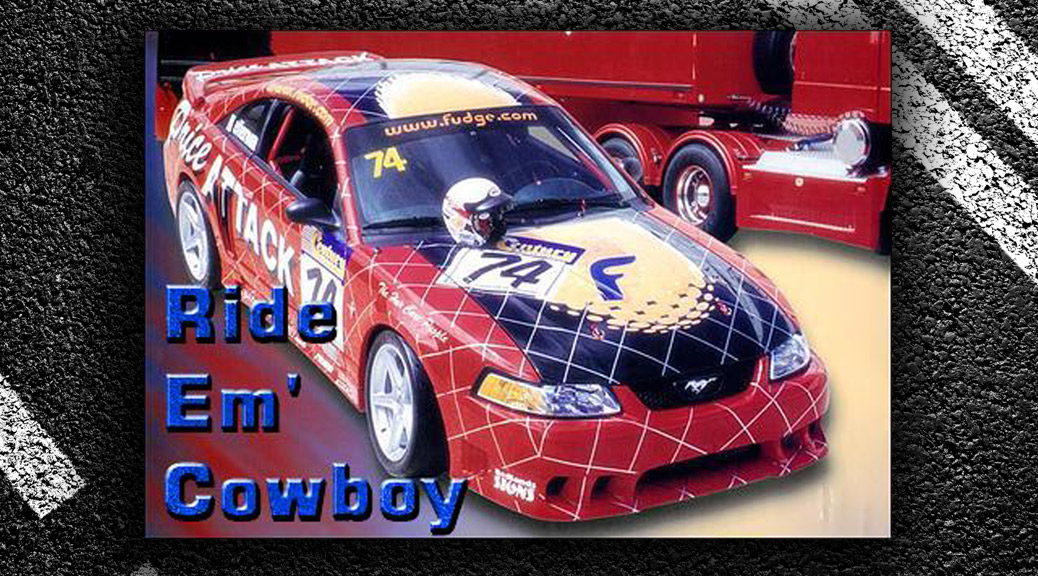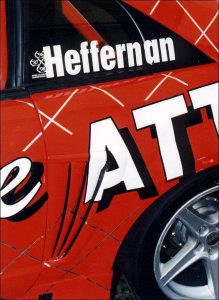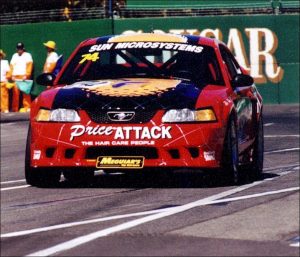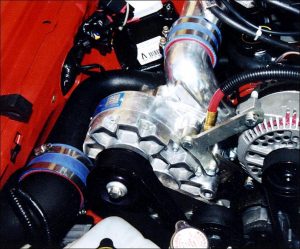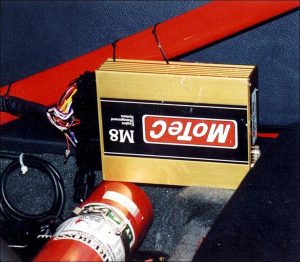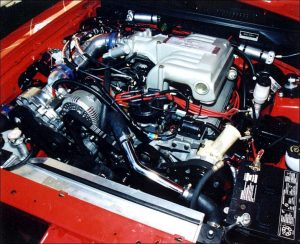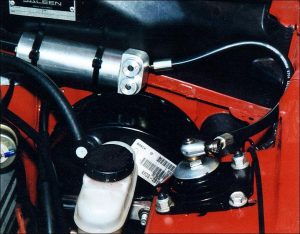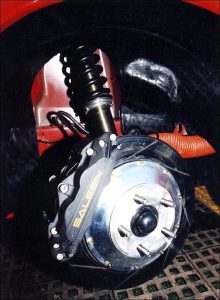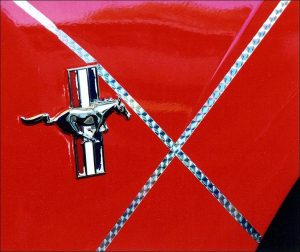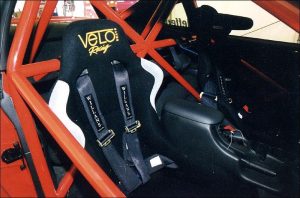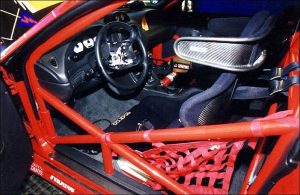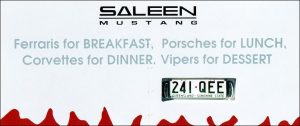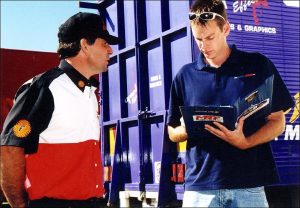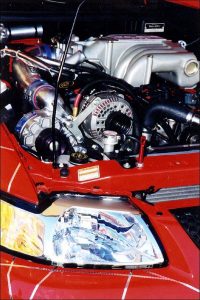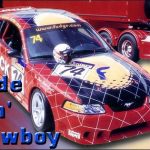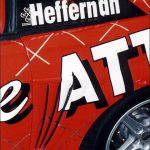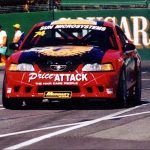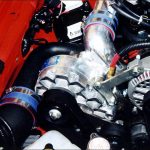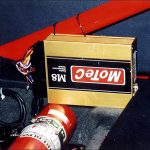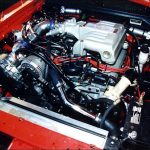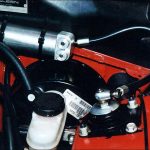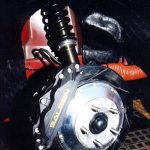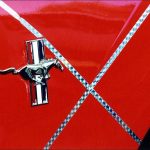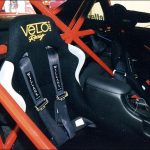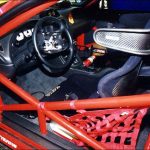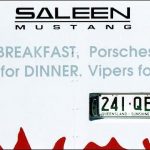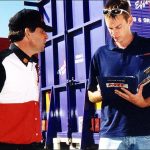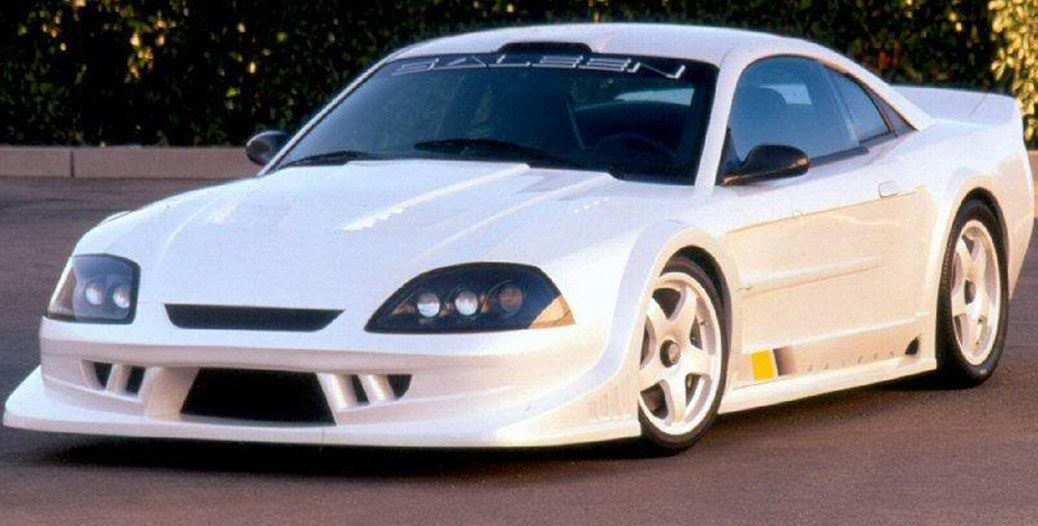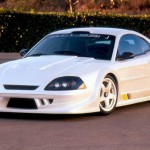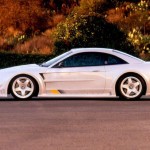By: ANDY SEILER on May 21, 2003
Original Article: USA TODAY
‘Terminator 3’ Pops The Top On A Lexus
The hot movie cars of summer range from affordable to inconceivable to downright illegal:
Mini Coopers, which should have star billing in The Italian Job opening May 30, start at $16,975.
A Ferrari 575 Maranello, driven by Will Smith in Bad Boys II, will set you back more than $200,000. Galpin Motors in North Hills, Calif., is selling the Saleen S7 supercar that’s capable of 200 mph driven by Jim Carrey in Bruce Almighty for about $500,000.
Some of the cars in 2 Fast, 2 Furious are not street legal in the USA — at any price.
USA TODAY’s Andy Seiler profiles some of the summer’s wild cars, with stries on how they got there.
Ferraris cut to the chase in ‘Bad Boys II’
“There are some epic, massive car chases in Bad Boys II ,” says director Michael Bay (Pearl Harbor , Armageddon ). “I started to get nervous because we were getting very close to shooting, literally a month away, and we did not have a lead car. It’s very important to get the right car.” When Porsche turned him down, Bay decided to make his own car the star: a Ferrari 550 Maranello.
“When you do this, you need three cars, because otherwise you could be shutting down production. I had a Maranello. But Ferrari doesn’t need to put cars in movies. They make something like 250 a year worldwide. People put themselves on lists that are years out from getting one.”
Luckily, Ferrari lent the production two even grander 575s. “I swore on my life that I wasn’t going to damage these cars,” Bay says. “We used the 550 for the heavy stunt work where we could have totaled it so easily.”
Near the end of shooting, “the Maranello was perfect, not a ding. Then Martin Lawrence was driving, and he suddenly rammed this car into a concrete block. I’m like, ‘Martin, dude, what’s going on?’ ”
The ding was “not bad,” he says.
* Other cars in the film: Hummer H2, Cadillac CTS and Buick’s Blackhawk prototype. Bad guys drive vintage cars: 1968 Pontiac Firebird, 1968 Chevrolet Chevelle and ’70 Nova, 1971 Dodge Super Bee and 1971 Pontiac TransAm.
Supercar, muscle car for “Angels’
The Angels’ cars express their personalities, says Cyril O’ Neil, who as car wrangler for Charlie’s Angels: Full Throttle has dealt with every car on the screen. His next project is the Spider-Man sequel.
Demi Moore , as a “fallen (former) Angel,” drives a Ferrari Enzo, Ferrari’s newest supercar. “They are essentially barely street legal Formula One cars,” O’Neil says. “The sticker price on the Enzo, if you could find one on a waiting list, is over $600,000.” Only 399 of these next-generation supercars, which can go 217 mph, are being made. “Like Demi’s character, it’s just pure and raw, but somehow distinctly refined power. It is speed, elegance, and there’s nothing like it in the world.”
Lucy Liu does not drive a car in this second episode of the big-screen series, but the other two Angels make up for it: “Drew Barrymore’s character is a rough-and-tumble let’s-go-get-’em kind of woman, so she drives a classic muscle car, a 1970 Chevelle LS6. It’s actually a clone, which means that it is exactly the same car but not a factory-assembled car. It’s a tough car — we blew the thing probably 10 feet in the air when it exploded.
“Cameron Diaz’s character is, of the three, the motoring and automotive aficionado. She’s a vehicle expert, so she drives a 1962 Ferrari 250 GT California Spyder. That is one of the rarest cars in the world. There were only 100 ever made between 1959 and 1962. There are a handful of them in the United States. We got it from a private collector, and it’s since been sold for $1.3 million.”
* Other cars in the film: 1967 Shelby Cobra, 1967 GTO Pontiac Special Edition, 2003 Maserati Spyder and an unstoppable Osh Kosh M977 HEMTT (heavy expanded mobility tactical truck). There are Suzuki and Yamaha motorcycles in the film, too.
Mini Coopers get the ‘Job’ done
Director F. Gary Gray jettisoned all the characters and much of the plot from the cult 1969 Michael Caine movie The Italian Job.
But he wanted to keep the heist that could be executed only with Mini Coopers during a traffic jam.
“When I read the script, I wasn’t actually sure that they were coming out with new ones,” says Gray (Set It Off, Friday). “I thought we might have to use the old” Minis, as last summer’s The Bourne Identity did. “It was actually a coincidence that they were going back into production. Now I wish I had stock in BMW (which now makes the cars). I love the old ones, but I really love the new ones.”
Mini USA, which first showcased the car in last summer’s Austin Powers in Goldmember (Caine got to drive one again), provided Gray with 30 cars, including three special electric Minis that aren’t available to consumers for a subway system chase scene. “No combustion engines could be used,” Gray says.
Gray preferred wrecking real cars to simulations because he says audiences disengage when they suspect action is not real.
The Minis turned out to be frustratingly safe. “We had to disconnect all the safety features,” Gray recalls.
In one remarkable shot, Charlize Theron screeches into a small parking space between two SUVs. And yes, that really is Theron driving.
“When we sent our cast into training, it was less about training Charlize than trying to hold her back,” Gray says. “I saw her do two reverse 180s with two cameras mounted on the car. She would test the car beyond its limits — and I would totally freak out.”
‘Terminator 3’ pops the top on a Lexus
Villainous Terminatrix Kristanna Loken drives a Lexus SC hardtop convertible in this movie, which just happens to be the same car driven by Terminator 3: Rise of the Machines director Jonathan Mostow (Breakdown ).
“I wanted a cool convertible that hasn’t been too overexposed in the movies,” Mostow says. “I like the idea of a Terminator driving my car! The car suits her personality. It’s sleek, it’s sexy, it’s powerful and it’s fast — which are all traits that fit the character.
“It was a very strange sensation to destroy a car you own,” Mostow says. “Same color, same interior, same exterior colors. I take good care of my car. I love my car.”
Two of the convertibles were destroyed, but Mostow felt less sentimental about the loss of a dozen Toyota Tundra pickups. They were wrecked, and shot from every angle, to create the illusion of just one being destroyed.
“That’s how warped Hollywood filmmaking has become,” Mostow says. “I tell the car company, ‘We’ve got to destroy $150,000 worth of cars.’ And they said, ‘No problem.’ ”
These cars are ‘2 Fast 2 Furious’
“The Mitsubishi Evo that Paul Walker drives is an extension of him,” says 2 Fast 2 Furious director John Singleton.
“It’s kind of cool, because the Evolution VII is the dream car of a lot of people who are into import racing,” Singleton says. “There’s a whole culture of people who are into the whole scene of import racing. The cars are too fast, and they don’t meet U.S. standards, but some people get the cars anyway.
“I think you can get the Evo in the States, but you can’t get a Nissan Skyline GTR, another car Paul drives, because it’s not U.S. street legal. The Skyline has right-handed steering, and it’s like 500 horsepower.”
Walker also drives a Chevrolet Yenko Camaro.
Because the characters in the film are themselves car fanatics, their cars are meant to look like a vehicle they would have designed themselves.
“While Paul’s car is more subdued, more of a racing car, Tyrese Gibson plays a flashy guy, so Tyrese’s car (a Mitsubishi Eclipse Spyder) is flashier: more rims, a flashier paint job.”
Gibson also drives a 1970 Dodge Challenger Hemi.
“Suki, played by Devon Aoki , is a live-action girl who looks like an anime character. So her car is a Honda S2000, supercharged and tricked out, with pink neon trim and everything.”
Other cars in the film: 1994 Toyota Supra, 1995 Mazda RX7, 1994 Acura NSX and a 2003 Dodge truck, making this manna for car mavens for the price of a movie ticket.

